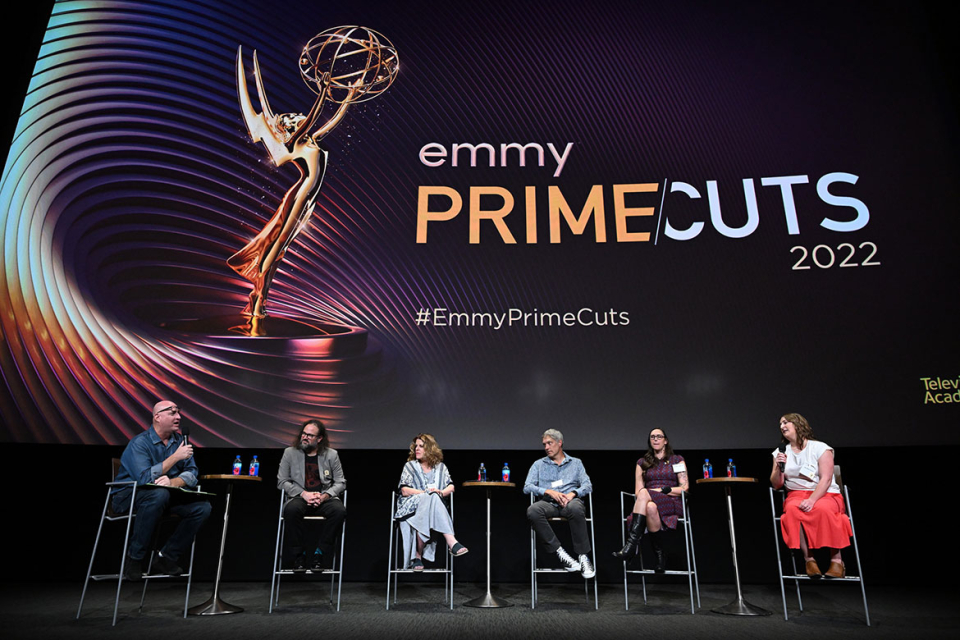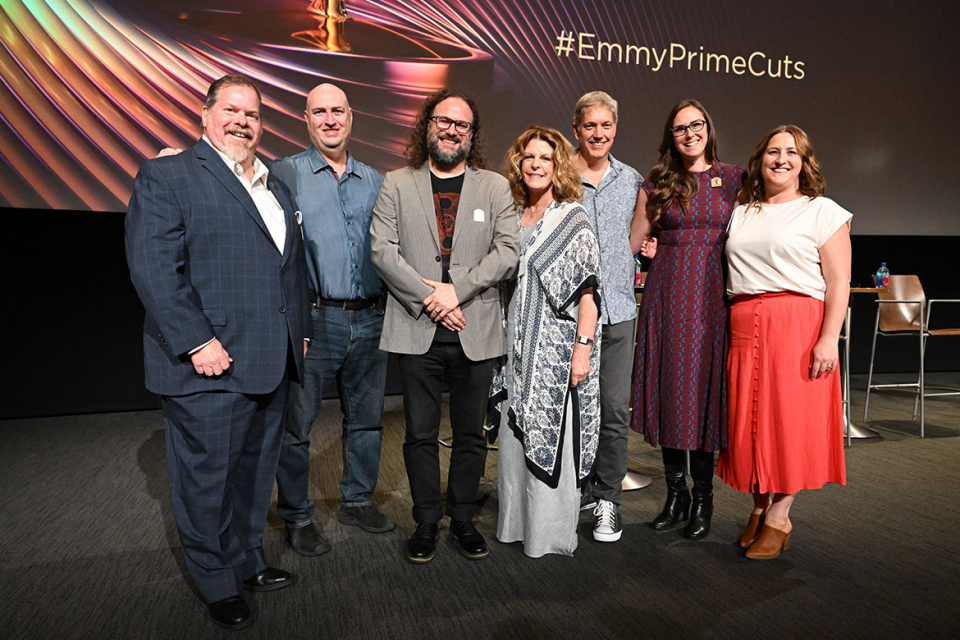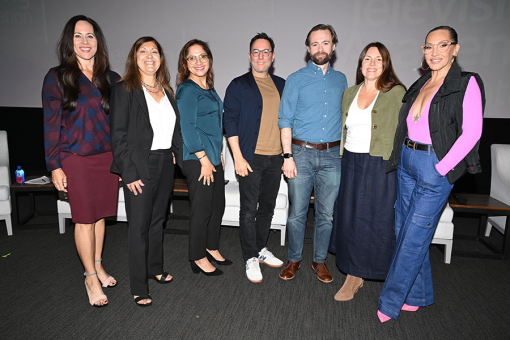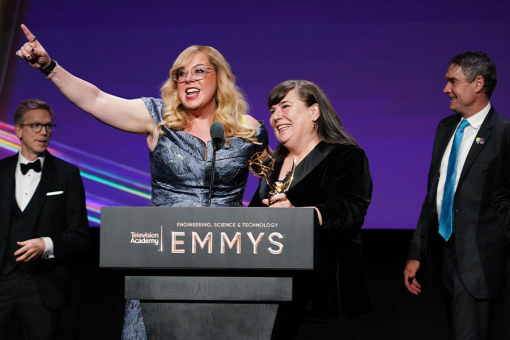There's a scene in the HBO/HBO Max special Harry Potter 20th Anniversary: Return to Hogwarts in which two of the movie franchise's three stars, Emma Watson and Rupert Grint, have a heartfelt chat.
"We grew up together," Grint says. "We're family. We always will be. I love you."
Hearing his words, Watson wipes away a tear. Working on the scene in his edit bay, Bill DeRonde did, too.
"You go on the journey, and you fall in love with the characters," said DeRonde, who was part of the special's Emmy-nominated editing team this year and has previously won five Emmy Awards. "As you create the story, it's all about your emotional connection with the story and with the characters. You have to feel what those characters are feeling." And choose footage to evoke the same response in viewers: "We're trying to take the best parts, and show [them] to you."
That theme of emotional connection ran throughout the Television Academy's sixteenth annual Prime/Cuts, a free public panel discussion about the art and craft of picture editing held September 24 at the Academy's Saban Media Center in the NoHo Arts District.
Joining DeRonde on the panel were Julio C. Perez IV, ACE, who won an Emmy this year for HBO/HBO Max's Euphoria on his first nomination, and fellow 2022 nominees Michael Lynn Deis (VH1's RuPaul's Drag Race All Stars), who won an Emmy last year; Pam Marshall (Fox's Call Me Kat), a three-time Emmy winner; and Melissa McCoy, ACE (Apple TV+'s Ted Lasso), a two-time nominee. Shawn Ryan, creator of The Shield and Netflix's upcoming limited series The Night Agent, served as moderator for the twelfth time.
In DeRonde's case, real-life people became the characters. The same is true for Deis, who chose to show a scene of a drag-queen contestant having fun working with a choreographer because, she said, "My job is to share in their joy of what they do, and also show how human [they] are — that they are just like us. I laugh with them every day in the edit bay."
Her colleagues echoed the need for connection to their fictional characters as well — but, Perez noted, sometimes a rational approach is more effective if an episode has sat for a while. "You then come back and actually create some emotional distance from the episode, and you can be a little more ruthless about it," he said. "You remember the first time you saw it, and then also try to be a little coldly analytical in a certain context. Sometimes you let your heart lead you and other times, you let your brain lead you. It's an interesting conundrum."
McCoy draws on her experience as a swimmer and water polo player to help tell the story of Ted Lasso's soccer players. "I've always been on a team," she said. "So, the team things I understand. When we go into a locker room, I [know] those dynamics, I've lived those personalities." The core is still the character's narrative journey, "trying to feel where the natural rhythm is and where you need to be for that individual's story."
Marshall works in multi-camera comedy, where the shooting pace and number of takes have increased to be more like Perez's and McCoy's single-cam milieu. One unchanged element: being onstage for shooting. "I always say, half my job is eavesdropping," she noted. "I overhear things like, 'They don't like that cue' or 'They want her to be snarkier.' And I can see moments on stage. It makes a big difference."
What advice did panelists have for aspiring editors? Trust your instincts, be open to learning from anyone, check your ego when it comes to getting notes and hide any feeling of panic. As DeRonde said, "You try to always keep moving in a positive way."
Prime/Cuts was presented by the Television Academy's Picture Editors Peer Group Executive Committee; Scott Boyd, ACE, and Nena Erb, ACE, are the peer group governors.
To view a photo gallery of the event, click here.












